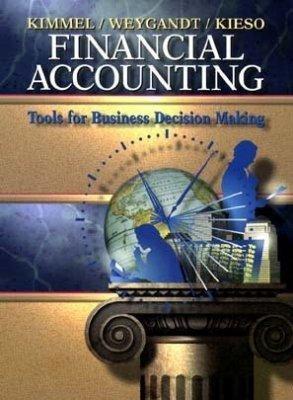Question
Accounting Cycle Project You are requested to use your assumed business to prepare a 9 Step accounting cycle project which include the 9 steps. Complete
Accounting Cycle Project
You are requested to use your assumed business to prepare a 9 Step accounting cycle project which include the 9 steps.
Complete on this one Please with the Missing Steps - Step 2 till step 9 for this Data

Started new business Alnaqbi for Football Training. Following transaction are made in the month of August 2020.
| Transactions |
| 1. You contribute $4,000 in cash to start the business. |
| 2. You purchase $500 worth of equipment for use during classes |
| 3. You purchase liability insurance at a total cost of $1,200. The policy covers September 1 through December31 paid on 08-03-2020. |
| 4. You receive cash totaling $800 for classes |
| 5. Your instructor teaches classes for the month. You agree to pay $600 for the classes. $300 is paid on August 31, and $300 will be paid on September 15. |
| 6. You pay rent for august of $1,000 on August 31. |
| 7. You use utilities (electricity and water) totaling $200. This amount is payable on September 15. |
| You purchase an additional $400 worth of mats, equipment, and clothing for sale |
| 8. You sell inventory costing $150 for a revenue of $225 |
| 9. You are worried about money, so your Uncle makes you an offer. He agrees to loan you $2,000 in cash. You will need to repay him sometime later, but he doesnt say when |
| 10. After borrowing money, you decide to withdraw some of your investment in the studio to pursue other opportunities. You decide to withdraw $1,000. |
| 11. Depreciation @ $20/month. |
Step 1 Analyze Business Transactions (Accounting Cycle):
Accounting Equation: Assets = Liabilities + Stockholders Equity
Business activity will impact various asset, liability, and/or equity accounts without disturbing the equality of the accounting equation.
| Transactions | Explaination | Impact on Accounting Equation |
| 1. You contribute $4,000 in cash to start the business. | Cash 4,000, Contributed Capital 4,000 | Assets(+4000)=Equity(+4000) |
| 2. You purchase $500 worth of equipment for use during classes | Cash -500, PPE 500 | Assets(+500), Assets(-500) |
| 3. You purchase liability insurance at a total cost of $1,200. The policy covers September 1 through December31 paid on 08-03-2020 | Cash -1,200, Prepaid Insurance 1,200 | Assets(+1200), Assets(-1200) |
| 4. You receive cash totaling $800 for classes | Cash 800, Service Revenue 800 | Assets(+800)= Equity(+800) |
| 5. Your instructor teaches classes for the month. You agree to pay $600 for the classes. $300 is paid on August 31, and $300 will be paid on September 15. | Cash -300, Wage Payable 300, Instructor Expense 600 | Assets(-300)=Liabilities(+300)+Equity(-600) |
| 6. You pay rent for august of $1,000 on August 31. | Cash -1,000, Rent Expense 1,000 | Assets(-1000)=Equity(-1000) |
| 7. You use utilities (electricity and water) totaling $200. This amount is payable on September 15. | Utility Payable 200, Utility Expense 200 | Liability(+200)+Equity(-200) |
| You purchase an additional $400 worth of mats, equipment, and clothing for sale | Cash -400, Inventory 400 | Assets(+400), Assets(-400) |
| 8. You sell inventory costing $150 for a revenue of $225 | a.Cash 225, Sales Revenue 225 b.Inventory -150, Cost of Goods Sold 150 | a. Assets(+225)=Equity(+225) b. Assets(-150)=Equity(-150) |
| 9. You are worried about money, so your Uncle makes you an offer. He agrees to loan you $2,000 in cash. You will need to repay him sometime later, but he doesnt say when | Cash 2,000, Loan Payable 2,000 | Assets(+2000)=Liabilities(+2000) |
| 10. After borrowing money, you decide to withdraw some of your investment in the studio to pursue other opportunities. You decide to withdraw $1,000. | Cash -1,000, Contributed Capital -1,000 | Assets(-1000)=Equity(-1000) |
| 11. Depreciation @ $20/month. | Accumulated Depreciation 20, Depreciation Expense 20 | Assets(-20)=Equity(-20) |
The Accounting Cycle Learning Objective 4 State the required steps in the accounting cycle. 1. Analyze business transactions 9. Prepare a post-closing trial balance 2. Journalize the transactions 8. Journalize and post closing entries 3. Post to ledger accounts 7. Prepare financial statements 4. Prepare a trial balance 6. Prepare an adjusted trial balance 5. Journalize and post adjusting entries 4-1 Illustration 4-11 Steps in the accounting cycle LO4
Step by Step Solution
There are 3 Steps involved in it
Step: 1

Get Instant Access to Expert-Tailored Solutions
See step-by-step solutions with expert insights and AI powered tools for academic success
Step: 2

Step: 3

Ace Your Homework with AI
Get the answers you need in no time with our AI-driven, step-by-step assistance
Get Started


